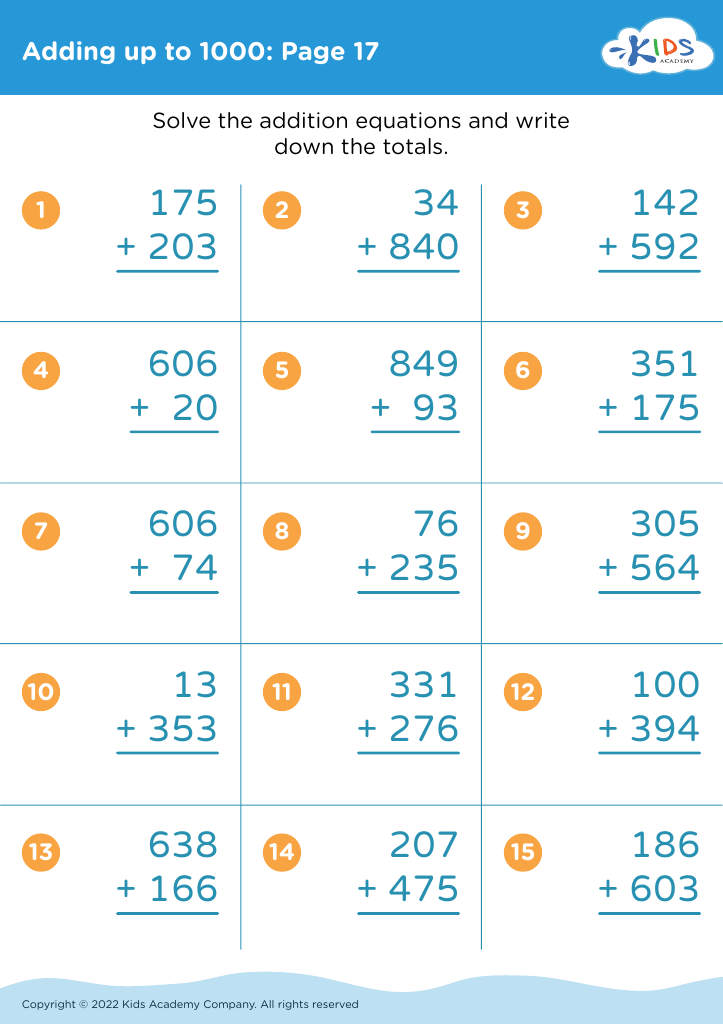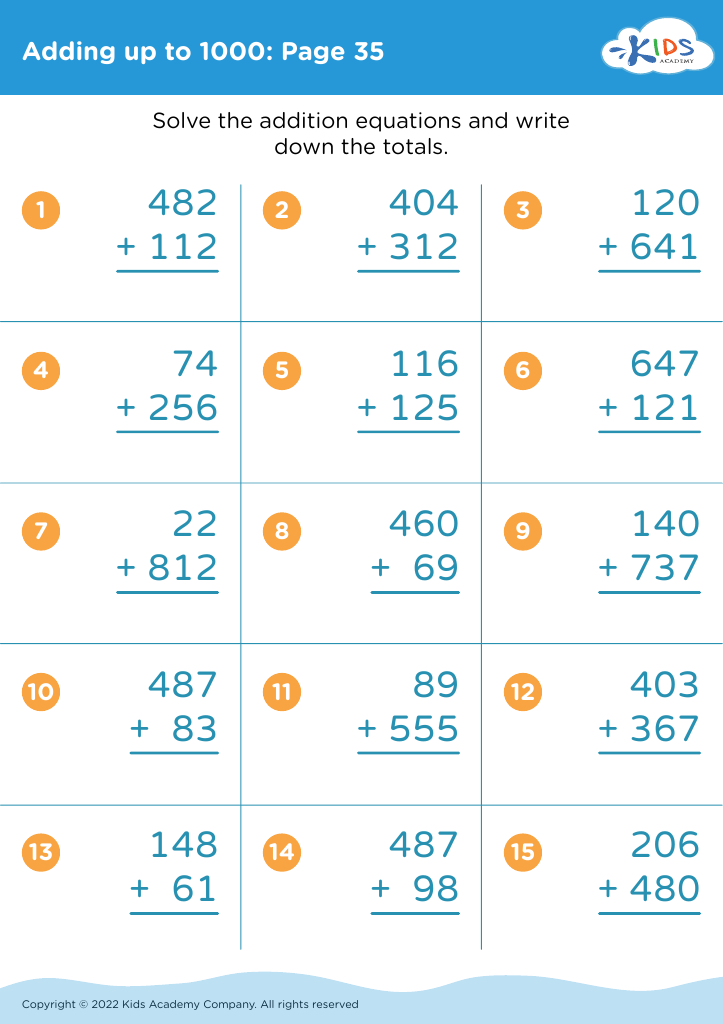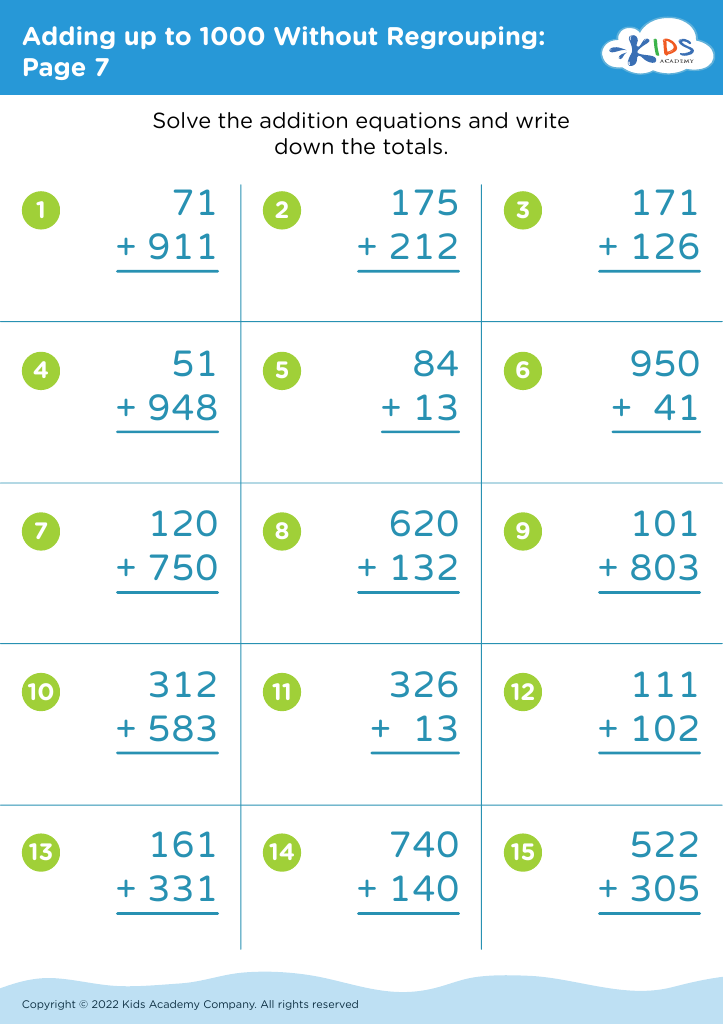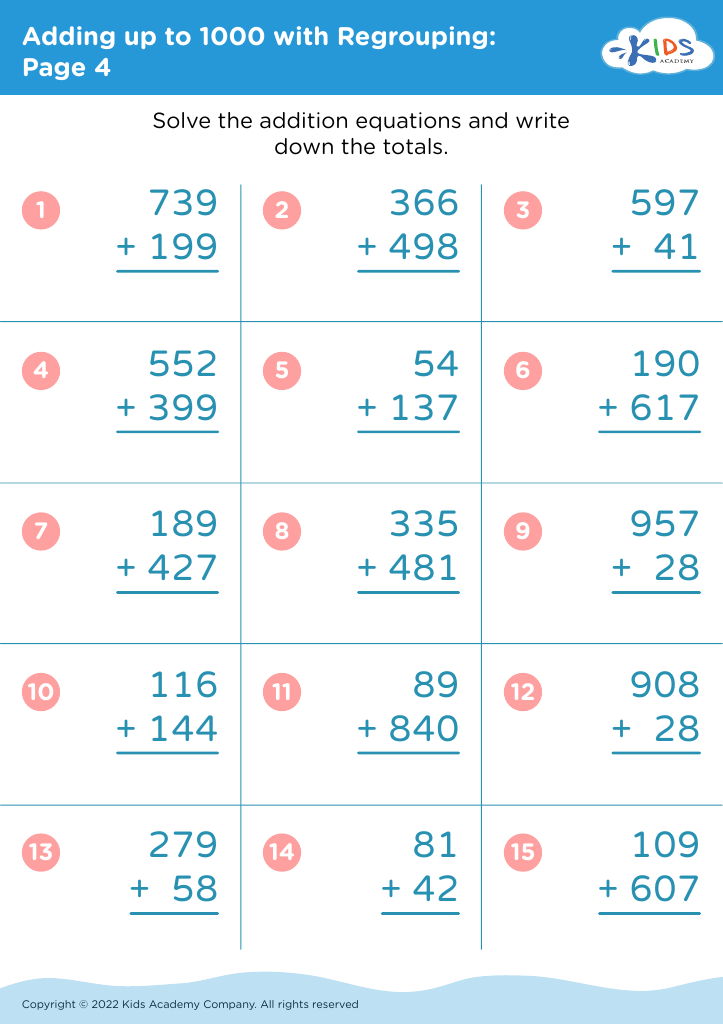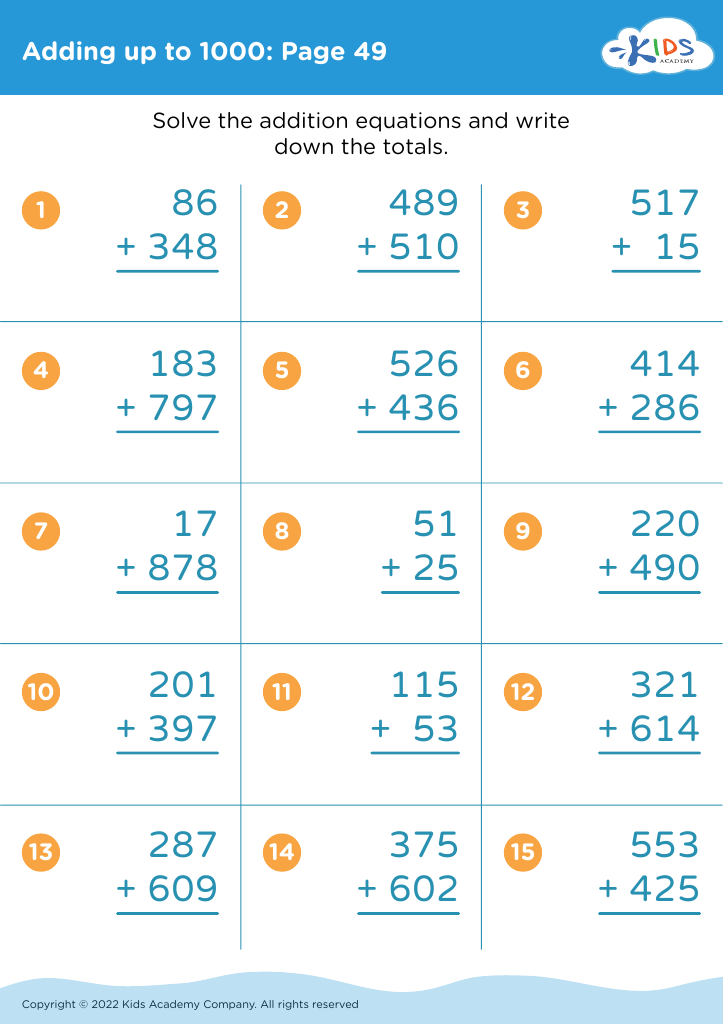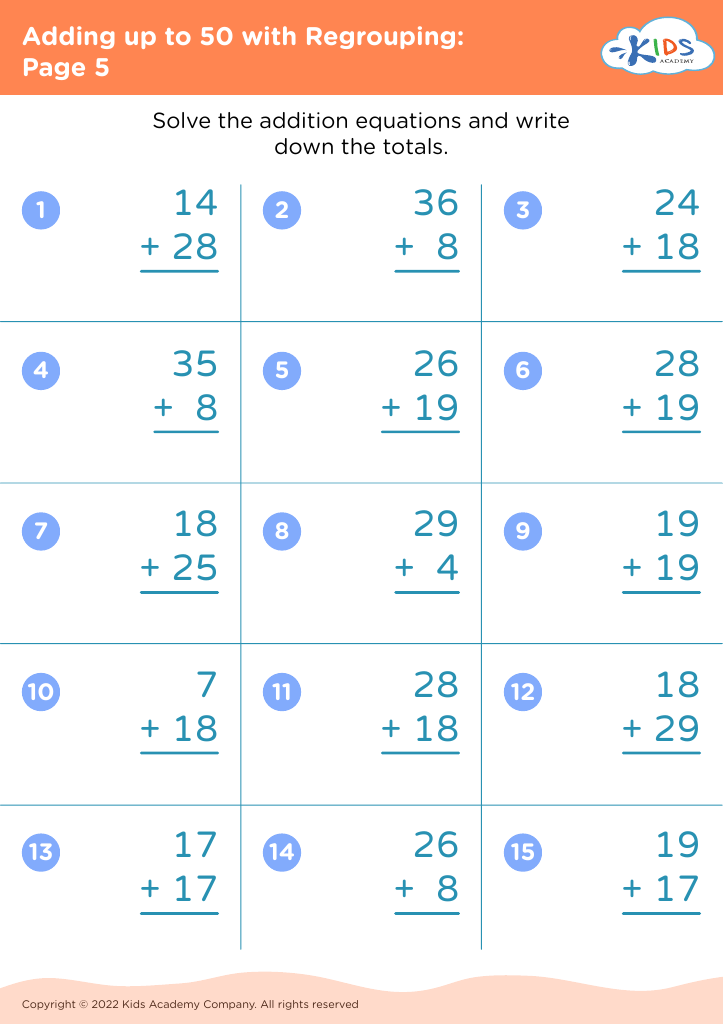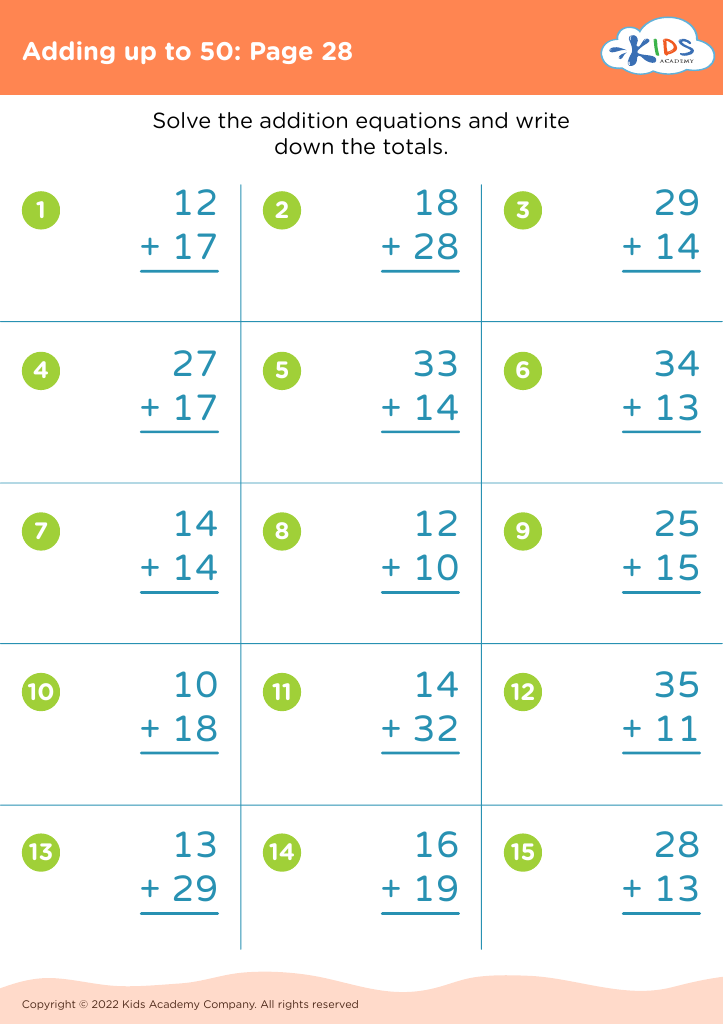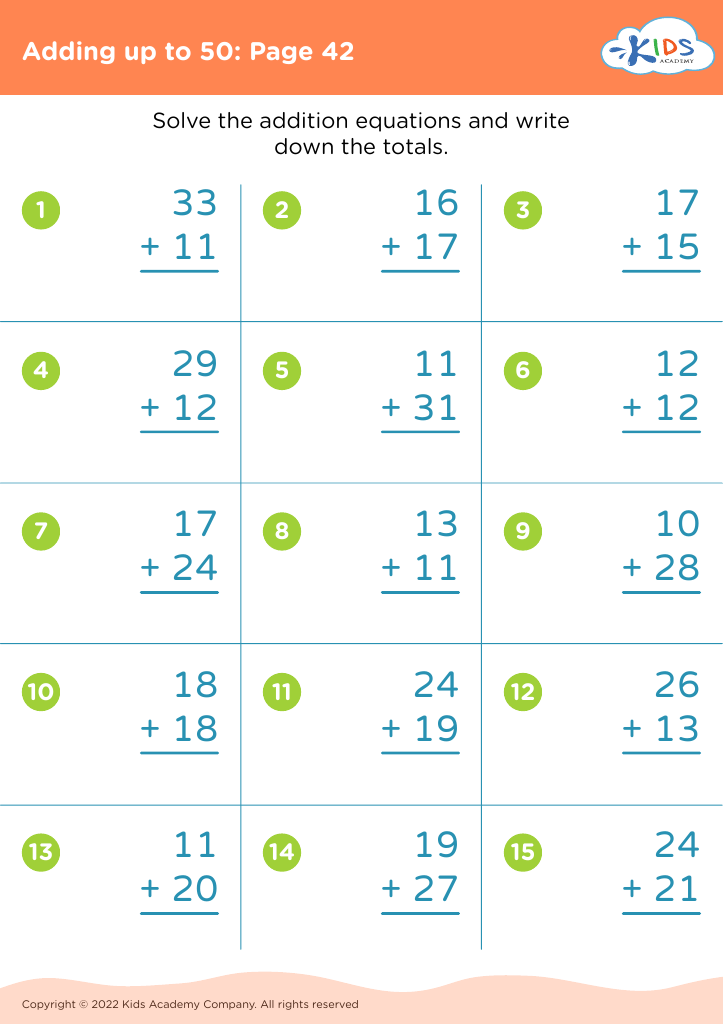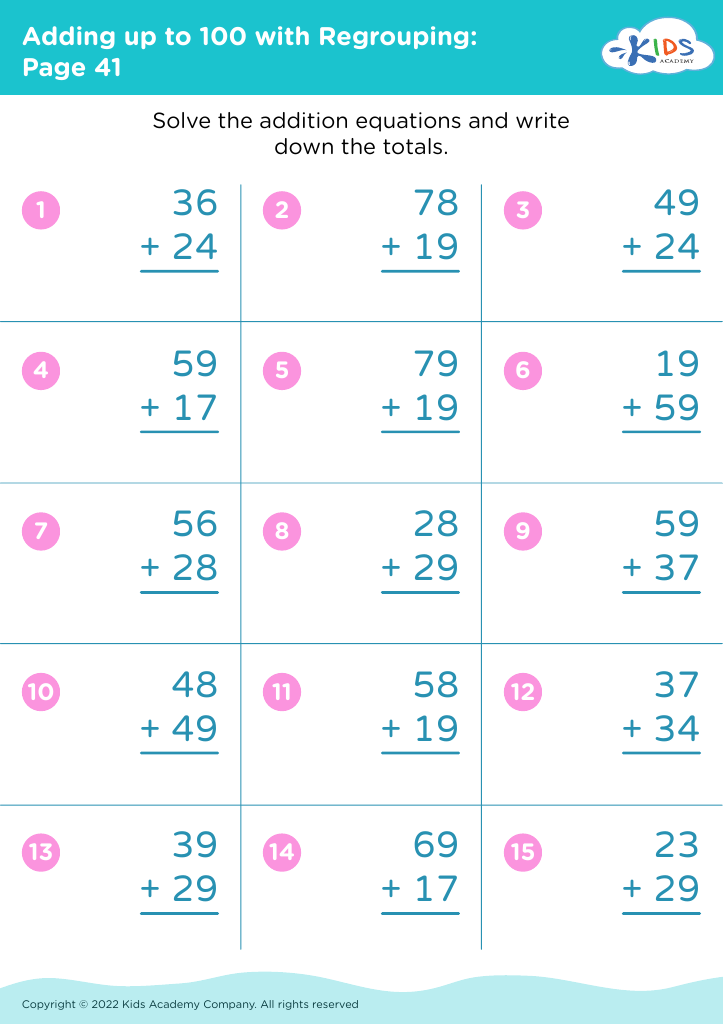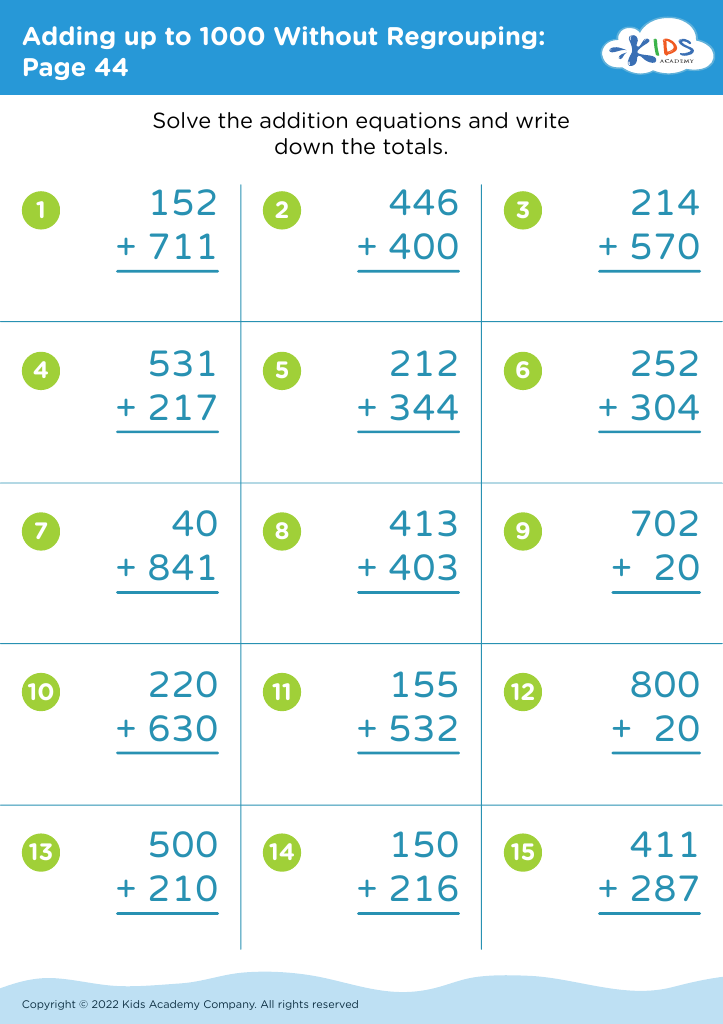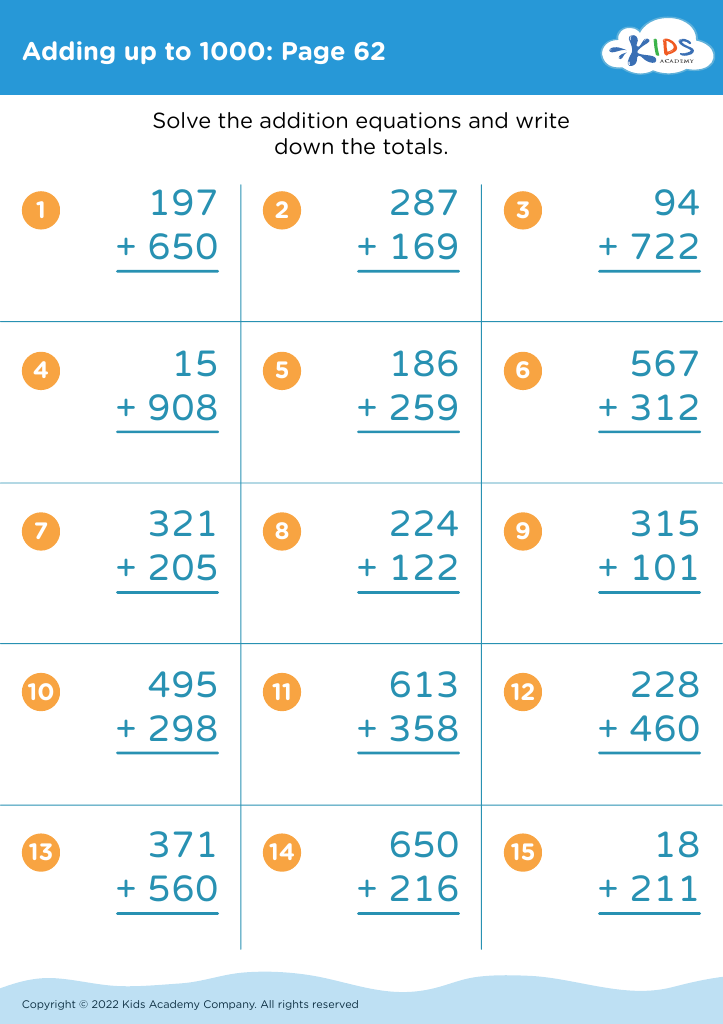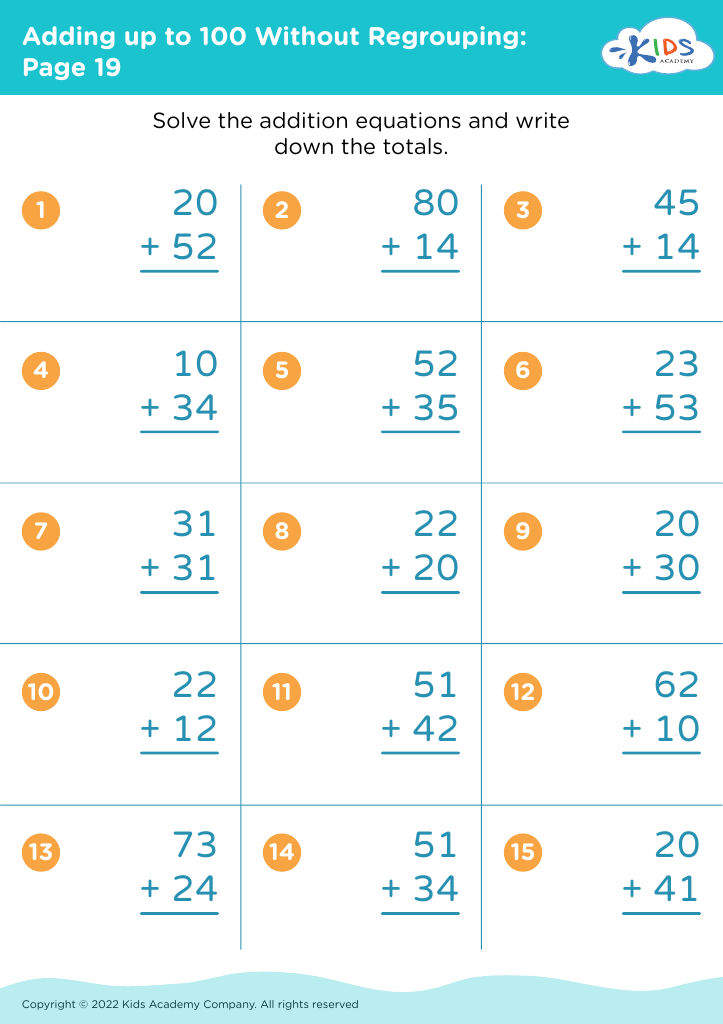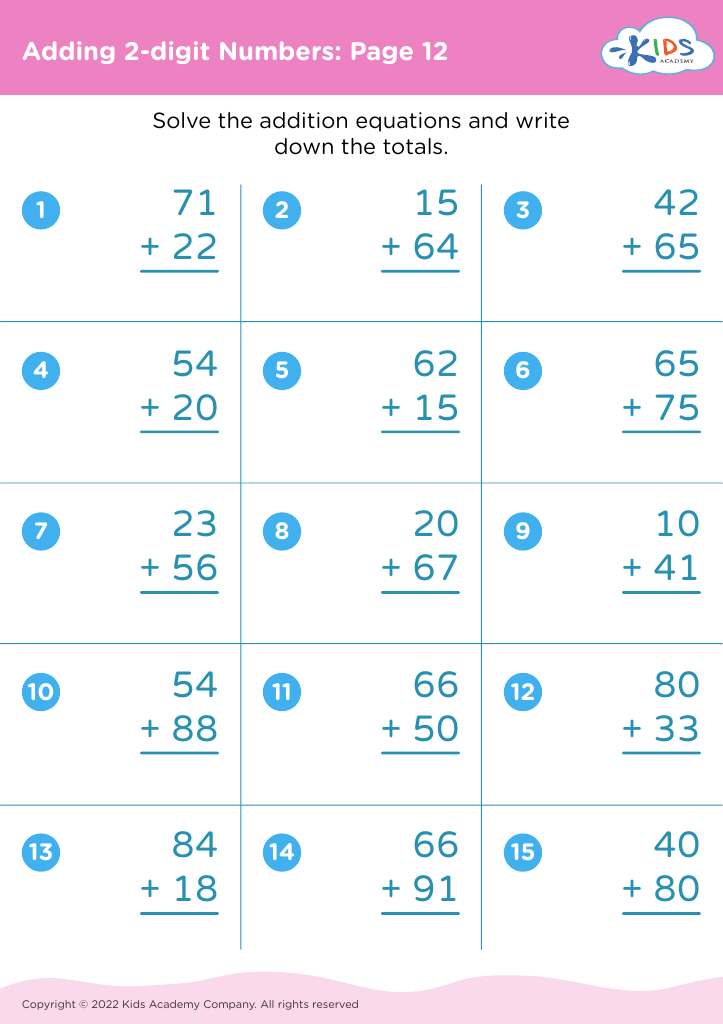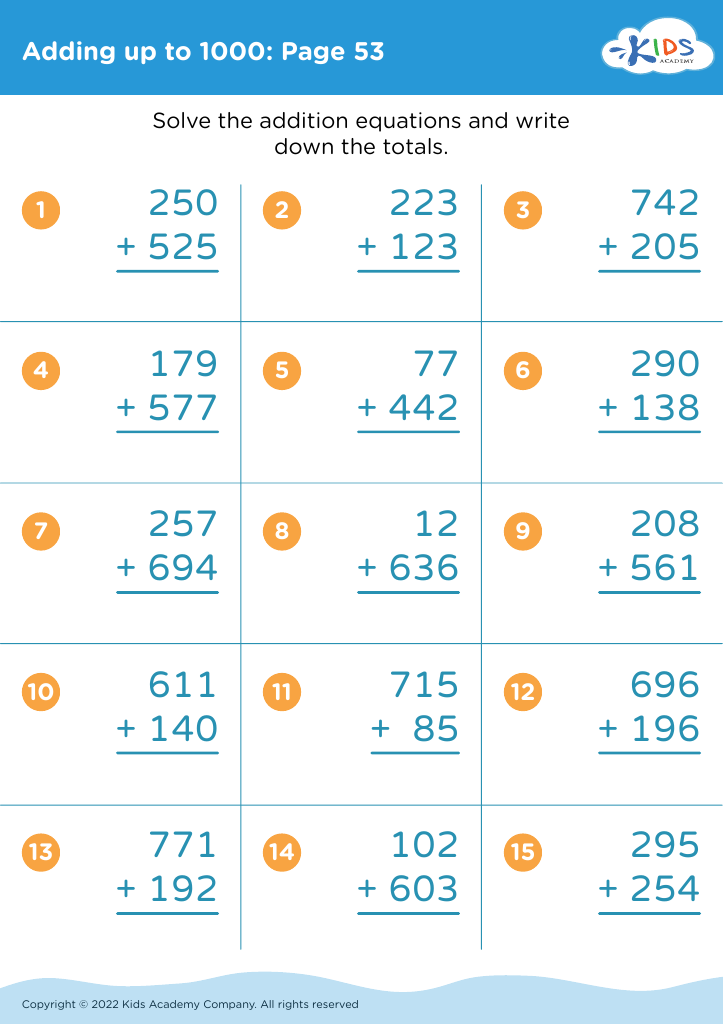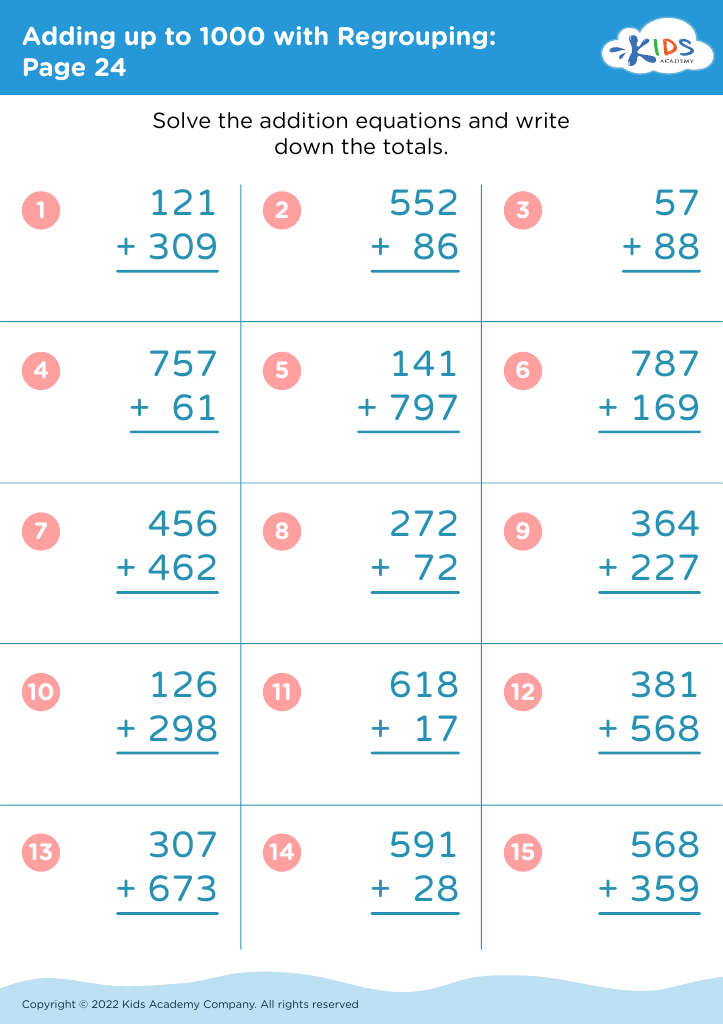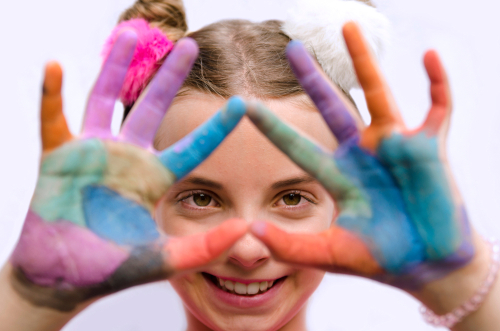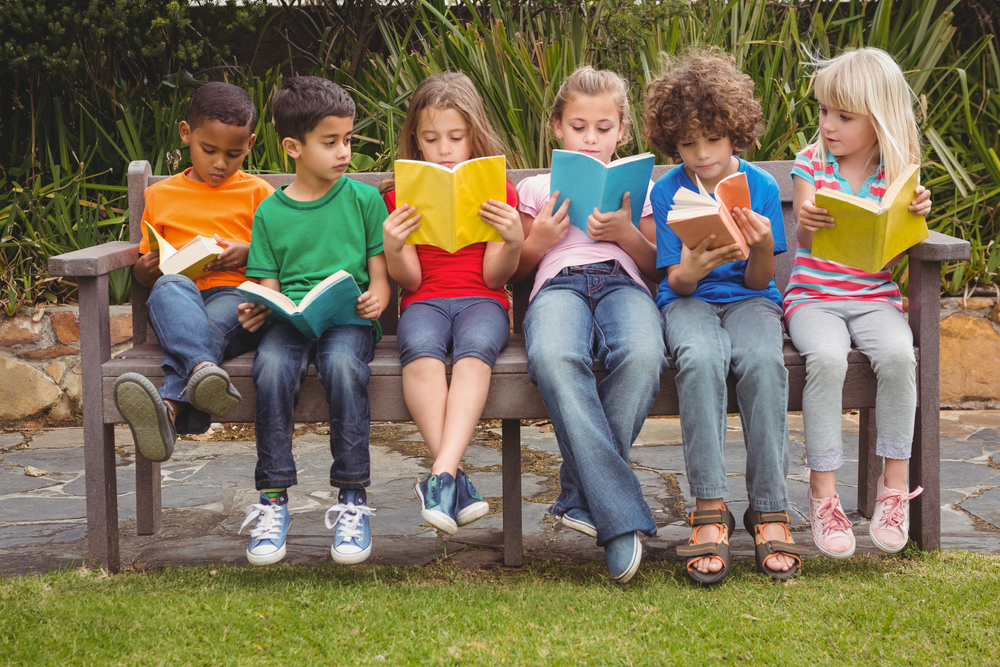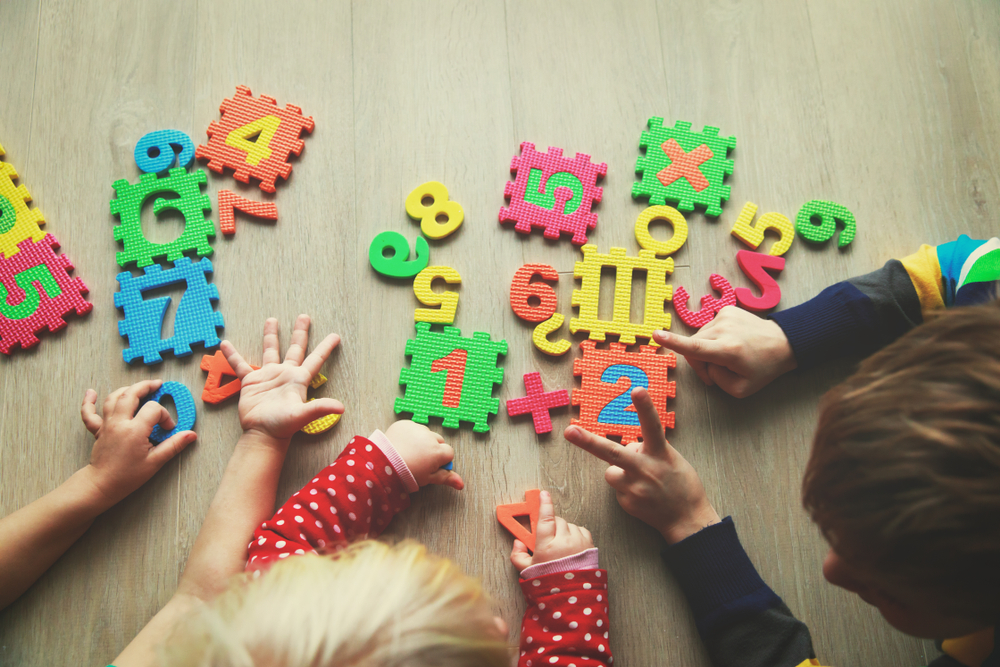Fraction comparison Math Worksheets for Ages 5-9
33 filtered results
-
From - To
Discover our engaging Fraction Comparison Math Worksheets designed for children ages 5-9. These interactive resources help young learners grasp the concept of comparing fractions, fostering foundational math skills in a fun and intuitive way. Our worksheets feature colorful visuals and age-appropriate exercises that encourage critical thinking and problem-solving. Families and educators can easily access and print these worksheets, making math practice convenient and enjoyable at home or in the classroom. Perfect for reinforcing fraction concepts, these activities are ideal for both individual and group learning, ensuring a solid understanding of how to compare and order fractions effectively. Explore today!
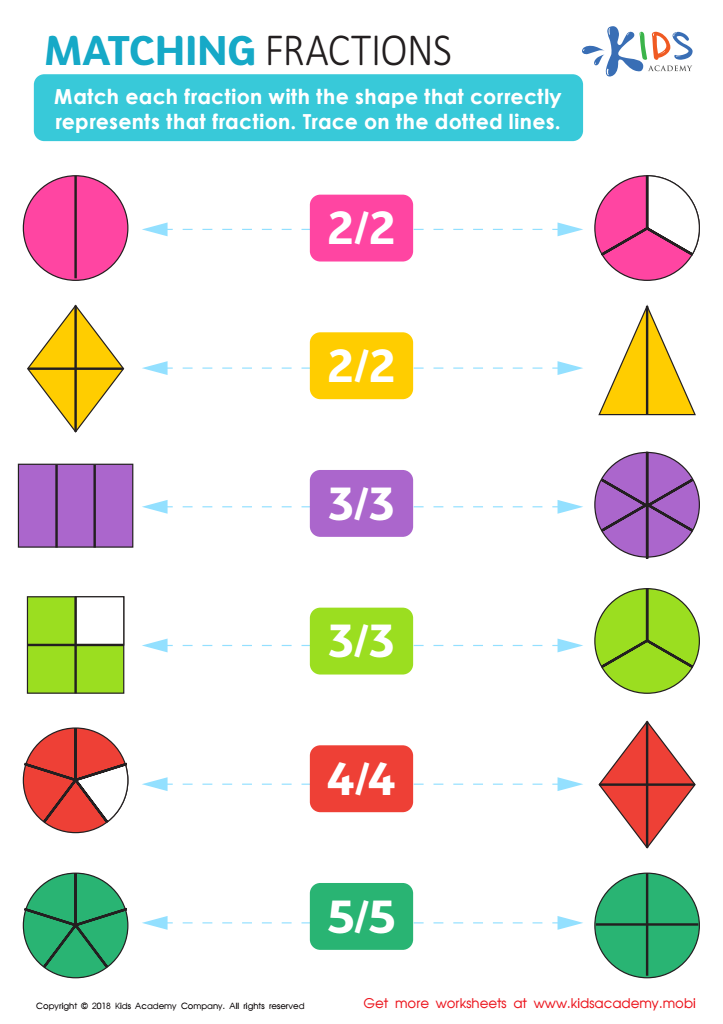

Matching Fractions Worksheet
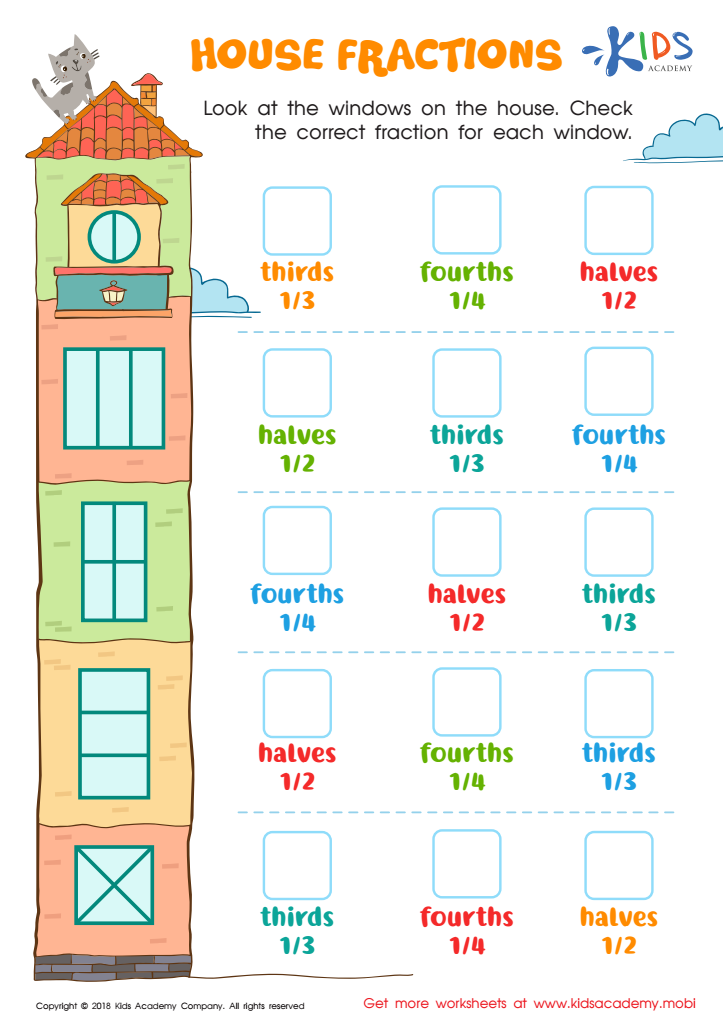

House Fractions Worksheet
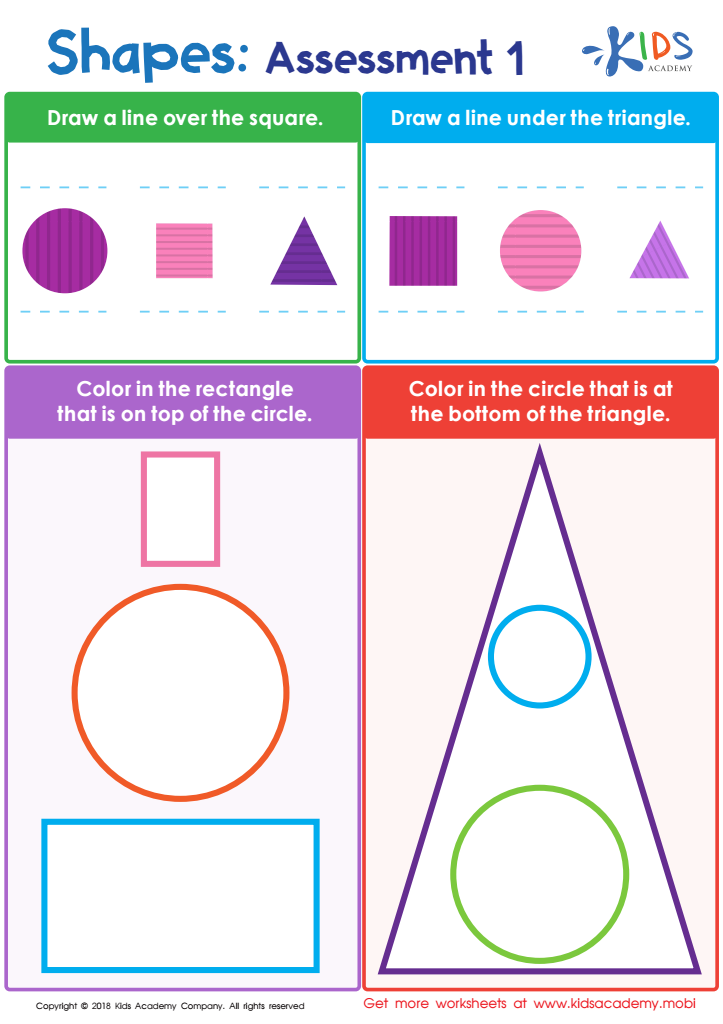

Shapes: Assessment 1 Worksheet
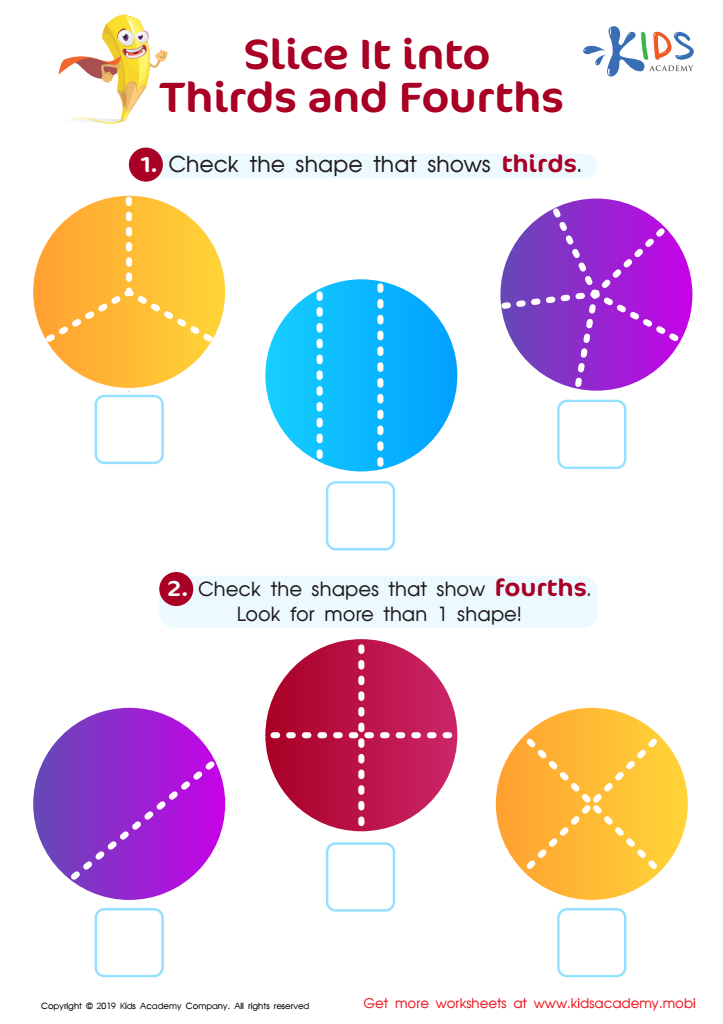

Slice in Thirds Fourths Worksheet
Understanding fraction comparison is crucial for children aged 5-9, as it lays the groundwork for more advanced mathematical concepts later in their education. At this early stage, students begin to grasp the foundational ideas of parts of a whole, and mastering fraction comparison helps them improve their critical thinking and problem-solving skills.
Parents and teachers should prioritize this concept because it encourages children to develop a deeper understanding of relationships between numbers. When children learn to compare fractions, they not only enhance their numerical skills but also gain confidence in their ability to tackle more challenging math problems later on. This understanding fosters logical reasoning, as they must think about how different fractions relate to one another.
Moreover, engaging with fractions in everyday contexts—like sharing food or measuring ingredients—makes math relevant and enjoyable for young learners. This real-world application helps cultivate a positive attitude toward mathematics. Lastly, foundational skills in fraction comparison directly influence children's academic success and self-esteem, setting the stage for a lifetime of learning in math and other STEM fields. By investing early in their understanding of fractions, parents and teachers can empower children to embrace math as a powerful tool for comprehension and creativity.

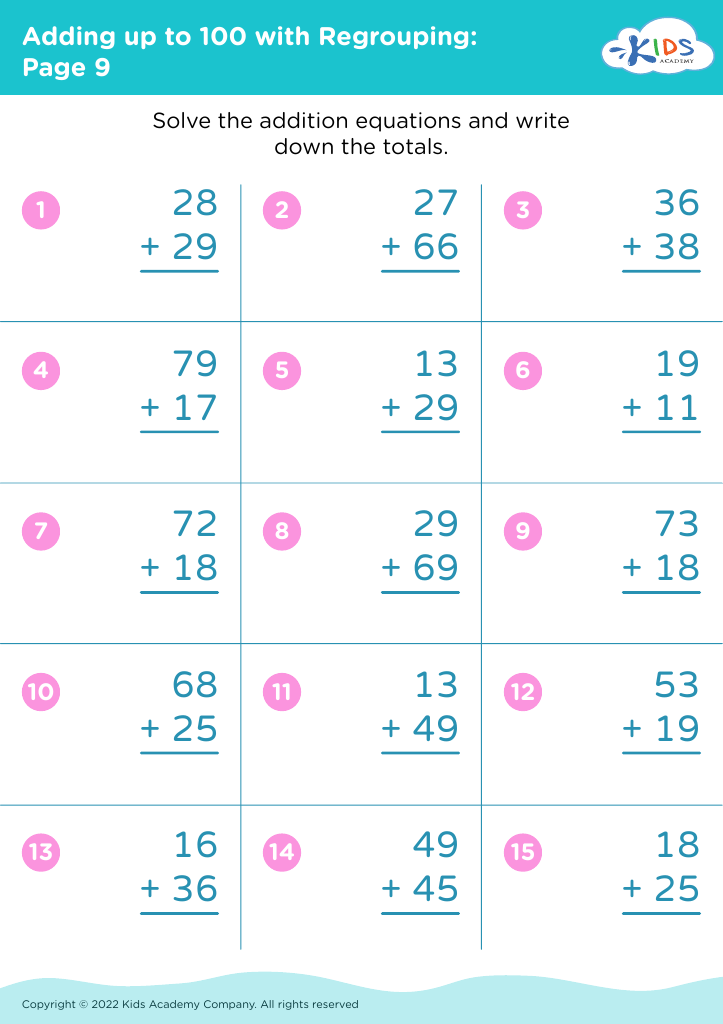
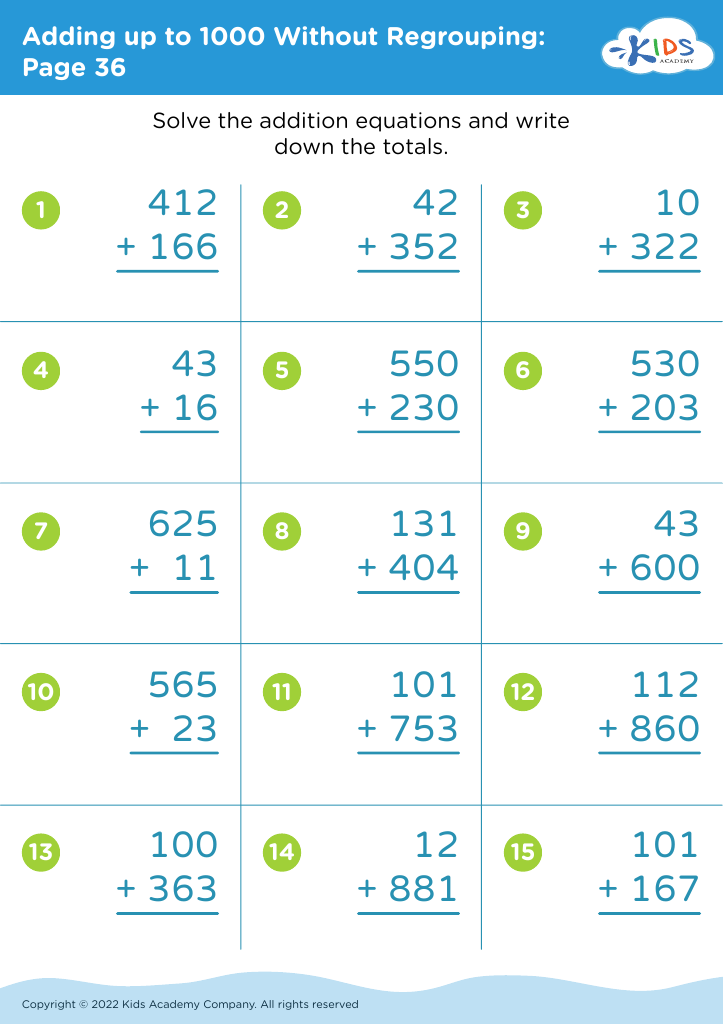
 Assign to My Students
Assign to My Students
